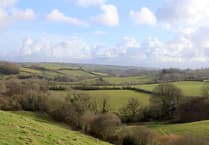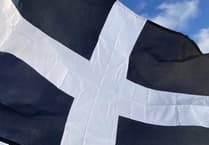A new publication uncovering an early history for the harbour at Bude and the Nanny Moore Bridge crossing was released in time for Bude Literary Festival.
The book, “Bude’s Tide Mill and Bridge”, written by Nick Cole, describes a large harbour estuary, a ‘Haven’ for prehistoric seaborn explorers and early sea traders; a fact that has not been fully appreciated by historians nor archaeologists when writing about early seafaring. It also suggests that Stratton and Helebridge were very much the “gateway to Cornwall” during the Romano-British and Saxon times and local beaches and harbours played a larger role than has been fully appreciated.
However, c1577 a large tidal millpond and mill was constructed in the middle of the estuary by Sir John Arundell, then living at his estate alongside the River Neet, changing the flow characteristics of the estuary and the geography of Bude for ever. Without this development, Bude could have been divided north and south, rather like east and west Looe, or even Rock and Padstow on the Camel, says the principal author, Nick Cole.
The book explores the design and layout of this tide mill and goes on to explore the history of the crossing at what is today the iconic Nanny Moore’s Bridge; much of this story was near lost to memory and has taken a year of research by the author and David Thorn of Bude.
Nick said: “It has always been known that there was a mill in Bude driven by the tide, but it has not been clear how it operated, or how its milling wheels were driven. The book also questions the accepted build date, previously assumed to be 1589, because of the granite inscription built into the present Leven Cottage. However, a date of 1577 is thought to be the more probable build date. The book also introduces evidence to suggest that there were probable four modes of crossing of the River Neet, before the present Bridge was built c1860.”
He added: “The book is available locally and will be of interest to all who love Bude.”
For more on Bude Literary Festival see pages 32-33




